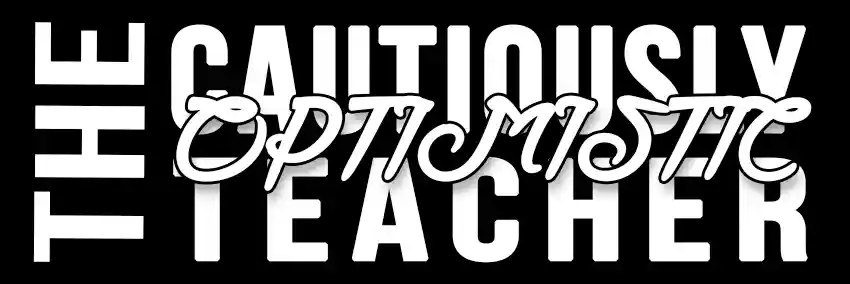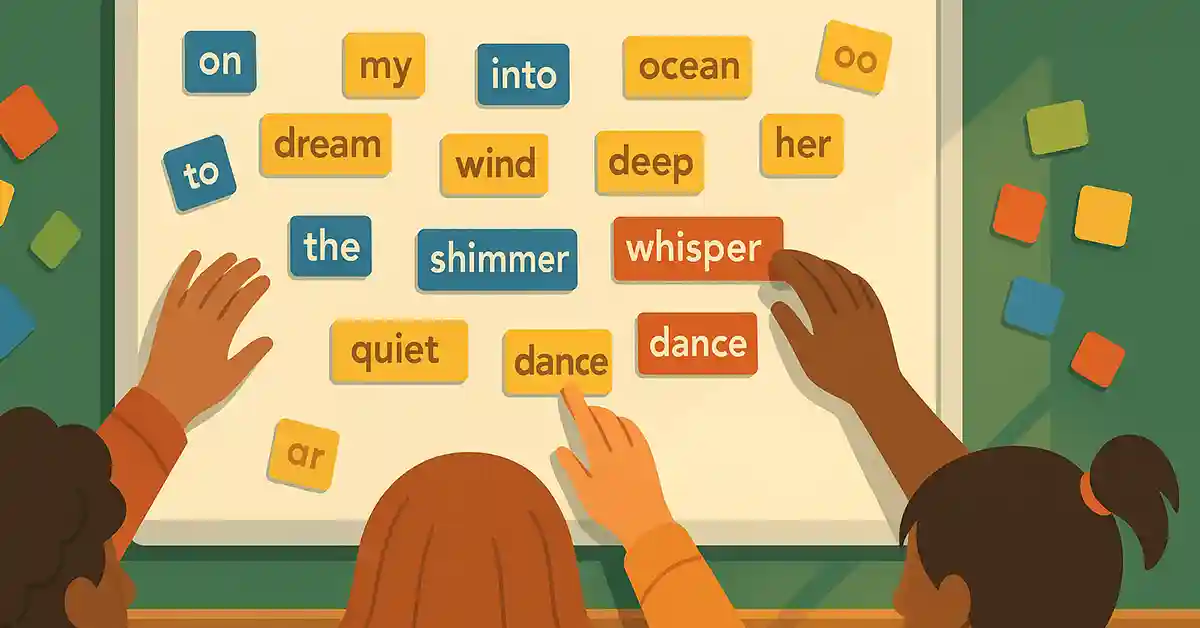Magnetic Poetry Lesson Plan: Turn Your Whiteboard into a Poem-Making Factory
Harnessing this power in the classroom need not be complicated. With a magnetic board and a thoughtfully selected set of word tiles, you can create a dynamic environment in which students explore poetic structure, refine word choice, and collaborate with ease. The lesson plan below provides clear objectives, materials, and step-by-step guidance—whether you prefer to assemble a custom magnetic kit or invest in a commercially produced set—to help you integrate magnetic poetry into your curriculum with confidence.
Why Magnetic Poetry Works
Constraint Fuels Creativity
Give students every word in the English language and they’ll freeze like a possum in headlights. Give them 150 magnetic nouns, verbs, adjectives, and wildcard words, and suddenly they’re slamming stanzas together faster than you can say “iambic pentameter.”Kinesthetic + Visual + Verbal
Moving words with their hands hooks kinesthetic learners, while the visual layout of phrases helps pattern-seekers notice rhythm. Add classroom discussion and you’ve got all three learning modalities in a neat steel-board sandwich.Instant Collaboration
Magnets are communal by nature. Even introverts find it easier to shuffle into a group poem when the words are already floating on the board.Zero-Risk Revision
Nobody fears the delete key when it’s as easy as sliding one magnet left or right. Revision becomes play, not punishment.
Materials Checklist
| Item | Notes |
|---|---|
| Magnetic surface | A metal whiteboard, filing cabinet, or a pizza pan from the dollar store |
| Magnetic words | DIY (see below) or a commercial kit – Available on Amazon. |
| Mini-trays | Old mint tins for small-group stations |
| Timer | Optional, but kids love a ticking clock |
| Phone or tablet | For snapping photos of final poems |
DIY: Build Your Own Magnetic Poetry Kit in Four Steps
Harvest the Words
Brainstorm 120–200 words: 40 nouns, 30 verbs, 30 adjectives, 10 prepositions/conjunctions, and 10 “wildcards” (think dragonfly, bamboozle, nacho).
Keep them curriculum-friendly (or spice them up if you’re teaching creative writing after dark).
Design & Print
Open a doc, choose a bold sans-serif font at 24–28 pt, type each word in its own text box, remove borders, and lay them out like a lazy crossword.
Print on standard paper or, for longevity, glossy photo stock.
Laminate & Slice
Run the sheet through a laminator, or cover both sides with clear packing tape if you enjoy living dangerously.
Use a guillotine or scissors to cut individual word tiles.
Magnetize
Grab an adhesive magnetic roll from any craft store (or salvage old promo magnets no one asked for).
Stick a strip to the back of each tile. Voilà—budget magnetic poetry without melting the credit card
The Magnetic Poetry Lesson Plan
Objectives
Students will experiment with word choice, syntax, and imagery to produce original poetry.
Students will revise collaboratively, providing peer feedback in real time.
Students will reflect on how constraints influence creative decision-making.
Grade Levels
Adaptable from Grade 2 through Grade 12 (and, honestly, a great staff-meeting icebreaker).
Time Needed
One class period (45–60 minutes), plus five for hallway bragging rights.
Procedure
Hook (5 minutes)
I start with a quick demo: rapidly slap five or six magnets into an absurd mini-poem—“moonlit burrito sings jazz purple”—and ask, “Why does this work? Why doesn’t it?” Kids immediately notice imagery, rhythm, and nonsense in action.Brainstorm Warm-Up (5 minutes)
Students predict which types of words will be hardest to find. (Spoiler: adverbs disappear quicker than my dignity at karaoke.)Build Mode (15 minutes)
Individual: Each student receives a mini-tray of 40–50 magnets at their desk.
Team: Small groups gather around one baking sheet.
Rules: No hoarding magnets behind your ear. You can flip a word upside down to turn was into saw—but honor system, folks.
Gallery Walk & Peer Feedback (10 minutes)
Everyone stands, wanders, and reads each other’s creations. They leave one sticky note praising imagery or suggesting a tweak. (Middle schoolers love secret notes; high schoolers pretend they don’t but secretly love them too.)Revision Sprint (5 minutes)
Armed with feedback, students get two minutes to upgrade at least one line.Spotlight Share (10 minutes)
Volunteers present; audience snaps fingers beatnik-style. I keep a goofy “Poet Laureate Fedora” ready for enthusiastic readers—it’s plaid and ridiculous, therefore coveted.Reflection & Exit Ticket (5 minutes)
Prompt: How did the limited word bank change the way you wrote today?
Collect on index cards or via your LMS.
Differentiation Tips
ELL & Primary Grades: Color-code parts of speech; include picture magnets for nouns.
Advanced Writers: Add blank magnetic strips and dry-erase markers so they can invent new words—but only three per poem to maintain the constraint challenge.
Visually Impaired: Use large-print fonts and pair students for tactile guidance.
Assessment
Formative: Observe participation during build mode; note revisions based on peer notes.
Summative Option: Have students photograph their poem, paste it into a doc, and annotate two deliberate craft choices (e.g., “I chose whisper over say for softer tone”). Graded with a quick rubric: imagery, word economy, coherence, reflection.
Extensions & Variations
Theme Day: Load the board with science vocabulary during a STEM poetry crossover. (Quantum taco collapses into salsa wave—chef’s kiss.)
Haiku Challenge: Limit poems to 5-7-5 syllables; watch students barter magnets like Wall Street traders.
Digital Version: Use Google Slides with draggable text boxes when you’re 1:1 and the custodians are weird about metal filing cabinets in hallways.
Poetry Wall: Leave the magnets up all week. Drop-in poets will sneak masterpieces between classes.
Troubleshooting (a.k.a. “Oops, My Magnets Fell Again”)
Magnets Sliding Off: Cheap thin magnets on a glossy whiteboard can drift south. Rough up the board lightly with a dry cloth, or invest in stronger magnets.
Word Shortage: If your word pool starts looking like post-Black-Friday shelves, print an expansion pack every semester.
Students Spelling Questionable Words: It will happen. Pause, discuss respect, maybe remove the offending tile (bodily becomes badly with a swift cut of scissors).
Final Thoughts
Running a magnetic poetry lesson plan is like unleashing a word carnival in your classroom—bells, whistles, and the occasional poetic cotton candy. With a pinch of prep (or a credit card swipe), you can transform a plain whiteboard into a living, breathing anthology. So gather those magnets, rally your young bards, and watch poetry stick—literally—to every inch of your learning space.







